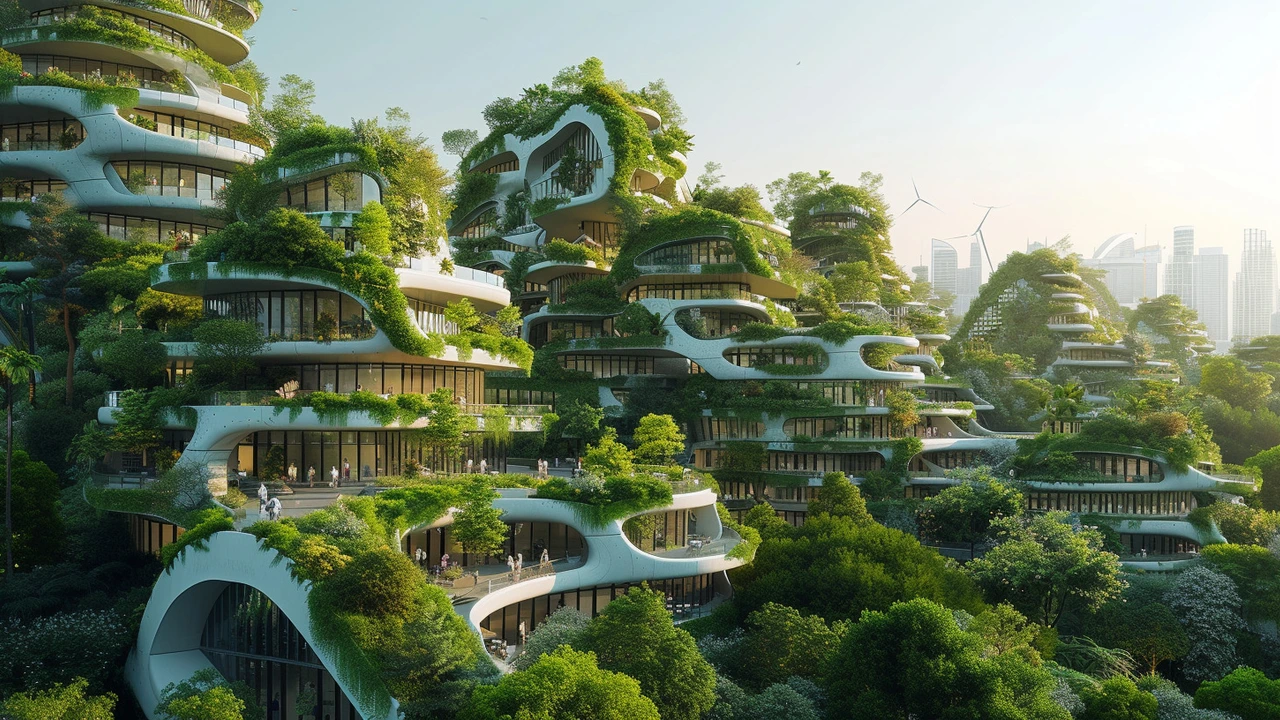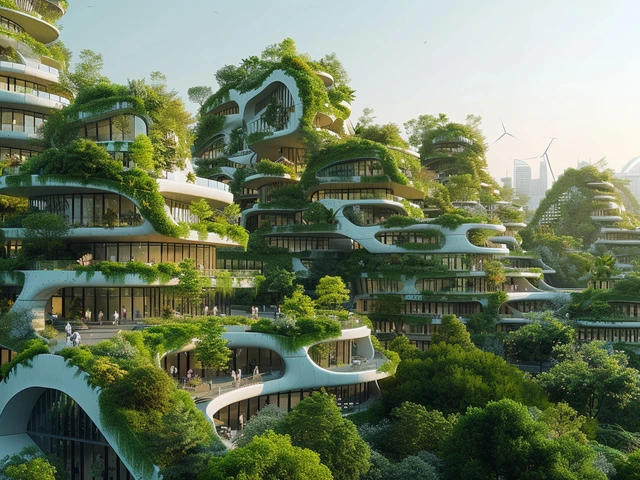The Emergence of Sustainable Architecture
The world is shrinking, my dear readers. For decades, we've been burning the candle at both ends, feasting on the resources of our beautiful planet to a degree that is simply not sustainable. One of the crucial areas where shift must happen is in the realm of the concrete and glass giants we know as buildings. Sustainability is no longer simply a buzzword; it’s a requisite. It's about time buildings were upgraded from being merely aesthetic structures to ones that actively replenish the environment. But don't worry, this doesn't mean we have to live in a treehouse or mud hut - no offense intended to any treehouse or mud hut dwellers out there.
The contemporary architectural scenario sets the stage for a fascinating intersection between the pragmatism of sustainability and the allure of aesthetic beauty. We're witnessing a revolution where avant-garde designs are now intertwined with an ecological conscience. This is not just about zero-carbon edifices, it's about net-positive structures that give back more than they take. A beautiful, isn’t it?
In Pursuit of the Functional Beautiful
Let's start off by debunking a common myth: sustainable architecture is not about slapping a few solar panels on your roof and calling it a day. It digs deeper into the core design principles, balancing the functionality aspects of the buildings with their aesthetic manifestations. One of my architectural heroes, Jørn Utzon, said that buildings should not really be based on science but on the joy of life; I believe the new era of architecture undoubtedly embodies this sentiment.
The path to a sustainable future is about harmoniously fusing the inherent beauty in our natural environments with the innovative grace of human craftsmanship. What if our buildings could breathe? What if they changed and evolved with the seasons, absorbing, storing, and releasing energy just like the flora and fauna surrounding them? It's a stirring concept. To be clear, I'm not suggesting our skyscrapers start sprouting leaves - although some daring designers are veering into this surreal territory.
Materials, Old and New, for the Architectural Palette
One pivotal aspect of sustainable architecture is the materials we choose and how we choose to assemble them. Environmentally friendly materials are not new – we've had timber, mud brick, and rammed earth all along. However, developments in technology have magnified the capacities of these humble construction elements. Timber, for instance, is now a robust, durable, and flexible resource with fire-resistant properties. New, more sustainable materials are also emerging, like mycelium bricks, that harness the urban biological wonders of mushroom roots.
It's important to look beyond the confines of the conventional concrete cubicle and embrace dynamic form-making in architecture. From flowing parametric forms to complex structural manipulations – these are tools that can cleverly mitigate the destructive effects of climate change. We can create an edifice that synapses with the wind, creating cooling microclimates or one that harnesses rainfall for utilities. Interesting, isn’t it?
The Value of Localizing Architecture
It's worth revisiting why the 'local' is pivotal in sustainable architecture. Just like the popular trend of eating locally sourced food, localizing building materials and design strategies helps reduce the carbon footprint of any structure. Remember, globalization has its advantages, but it doesn't nullify the indigenous knowledge and resources unique to every geographical location. I was born and raised in Melbourne, and I distinctively remember how there was always a certain charm about the local sandstone buildings, practically glowing in the Australian sun.
With modernisation came an influx of steel and glass, and while these materials offered exciting prospects, we also lost a piece of our architectural identity along the way. Invigorating localised architecture is not just about reinstating our heritage or reducing transport costs, it's about celebrating and adapting to the regional environment.
Facilitating Urban and Ecological Integration
When we talk about sustainability in context of cities, it's crucial to instigate reconciliation between the urban realm and the ecosystem. Urban areas currently house over half of the world's population and consume 75% of global resources. This immediate need for urban regeneration should be a priority in architectural discourse.
Imagine the possibility of living in a city where buildings don't just take up space but also contribute to the ecological wellbeing. Roofs become sanctuaries for indigenous plants, producing oxygen and mitigating the urban heat effect. Walls host vertical gardens that regulate temperature and humidity. Waterways infiltrate the urban fabric to enable fluid habitats for aquatic species. Now this is the sort of city I would love to live in!
The Power of Active Engagement and Ownership
Sustainability is not a spectator sport so to speak. We move closer to our goals when we foster a sense of active engagement. A sustainable building doesn’t just sit pretty and look good. It also involves the occupants and the community in meaningful interactions.
I remember visiting a housing project in Southern Europe where every resident was asked to plant and nurture a small garden. The joy and pride they took in asserting their individuality while working collectively towards a green canopy almost brought tears to my eyes. Architecture thus becomes a facilitator – it empowers people and ignites change.
Green Gold: The New Luxury in Architecture
At the end of the day, isn't luxury about comfort and satisfaction? I see no reason why comfort cannot be extended to include the wellbeing of our planet and future generations. The true luxury in contemporary architecture is thus sustainability. By embracing a lifestyle that reduces, reuses, and recycles resources, we can luxuriate in the ultimate satisfaction of living harmoniously with nature.
I’m definitely a fan of the ritzy penthouse or the sprawling mansion, but if it comes at the expense of my planet, I think I can do with a bit of downsizing. A cosy home powered by the sun, releasing luscious greenery into the urban scape, now that’s a beautiful vision that I would gladly call my palace.



Leave a Comments